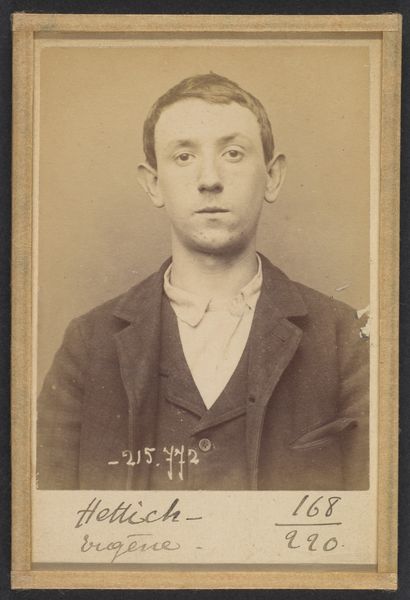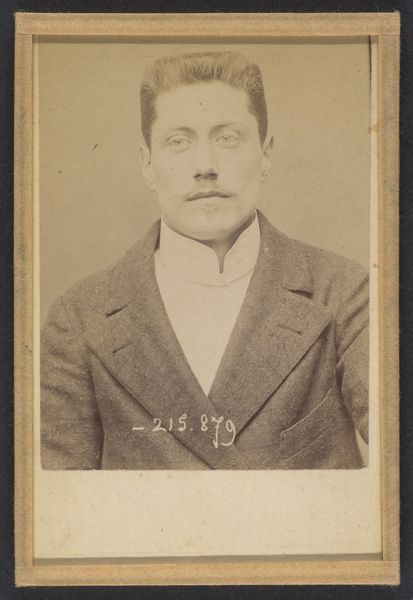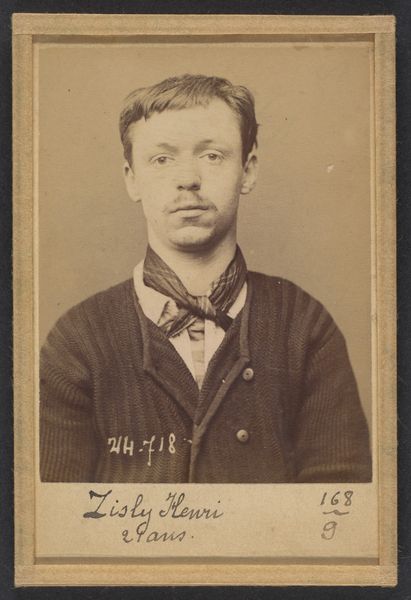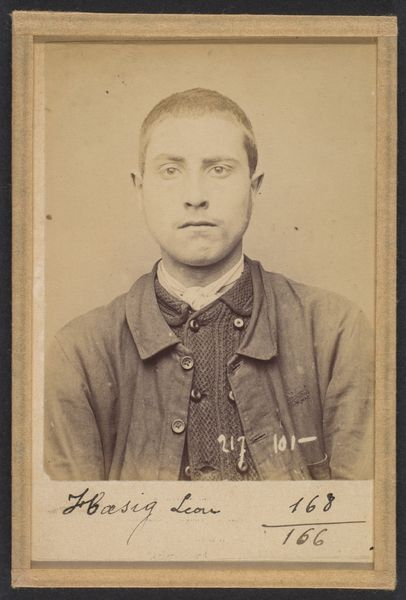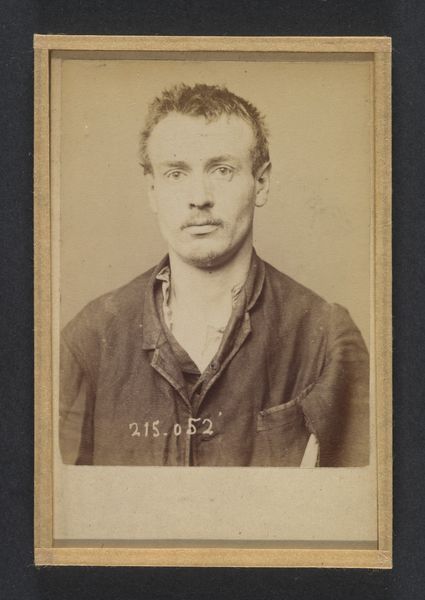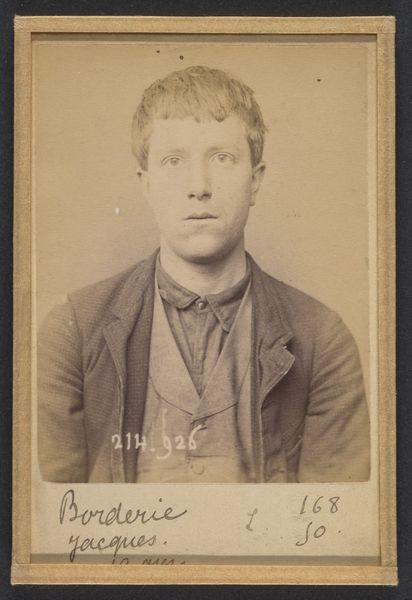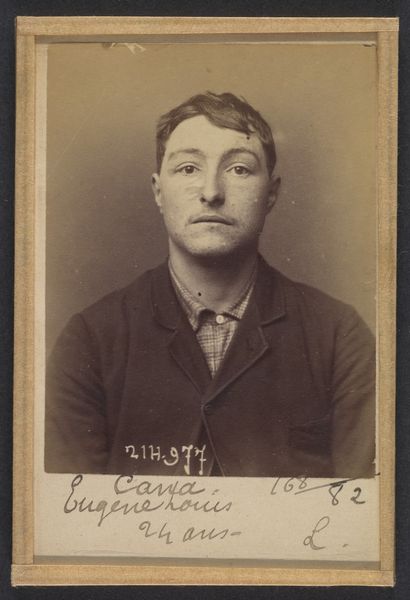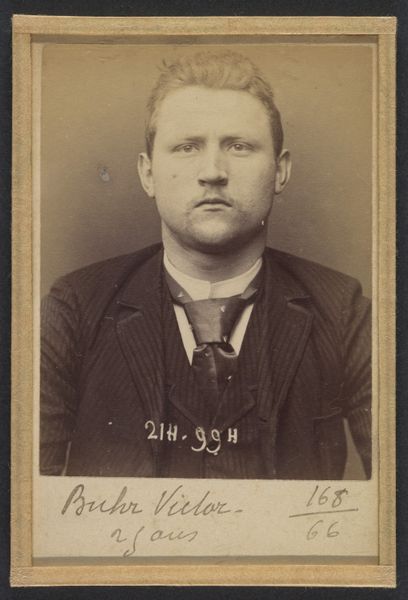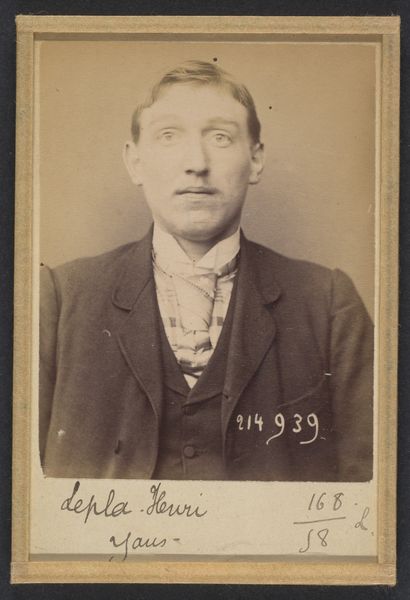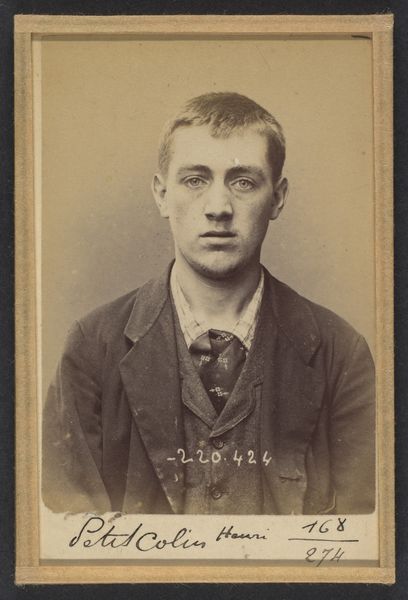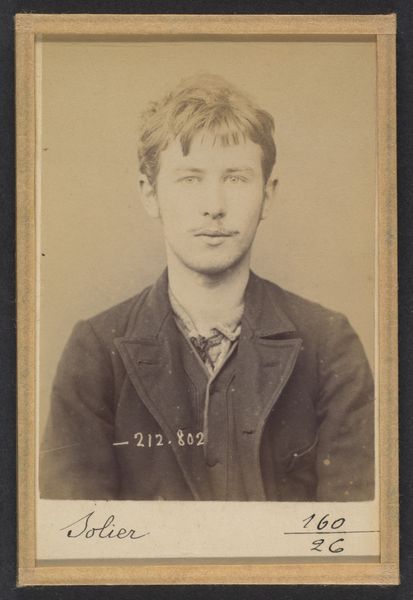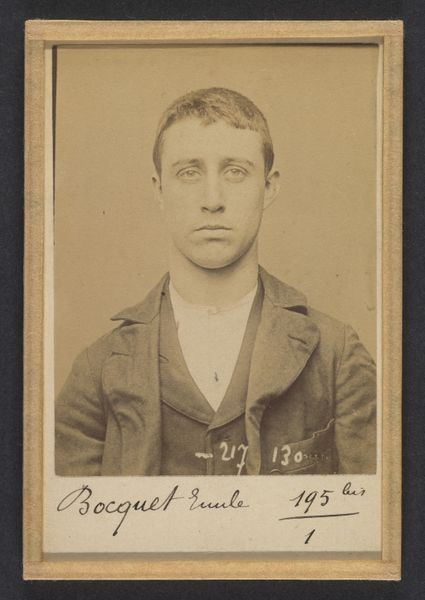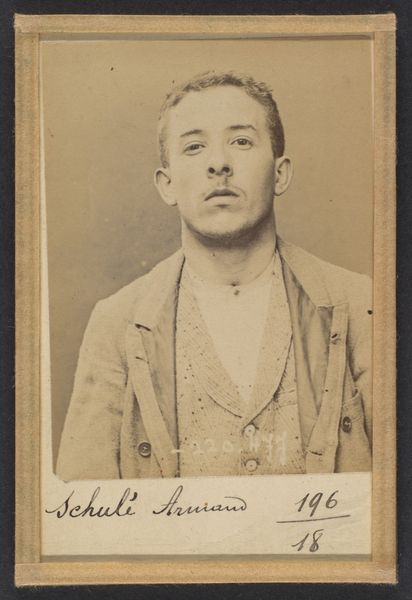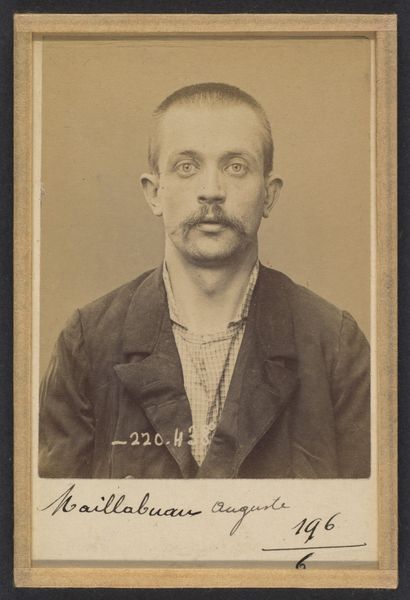
Chauvin. Émile. 18 ans, né à Paris IVe. Employé. Anarchiste. 1/3/94. 1894
0:00
0:00
photography
#
portrait
#
portrait
#
photography
#
academic-art
Dimensions: 10.5 x 7 x 0.5 cm (4 1/8 x 2 3/4 x 3/16 in.) each
Copyright: Public Domain
Curator: This photograph by Alphonse Bertillon, created in 1894, is a study in stark neutrality. It is called “Chauvin. Émile. 18 ans, né à Paris IVe. Employé. Anarchiste. 1/3/94.” Editor: It feels unsettlingly modern, like something straight out of a contemporary police procedural, but with an oddly intimate, faded quality. Curator: Indeed, Bertillon's approach to photography was all about systematic identification. These were hardly ever intended as art but they have entered art history and gained a lot of significance today. Think about what the word “anarchiste” meant at the time; it held powerful and sinister implications, like the image itself. Editor: Looking at the print itself—the card backing, the handwritten annotations—it’s impossible to ignore the processes involved in producing it. What kind of labor went into making such things back in the day, when photography wasn't the instantaneous act it is now? Curator: Bertillon pioneered this type of identification, known as Bertillonage, aiming to create a standardized system of body measurement and documentation for criminal identification. But let us consider Chauvin: the choice to capture this young anarchist in such a dispassionate, detached manner reflects a societal anxiety around political dissent. He is framed, essentially pre-judged, simply based on how he might have looked and how the data might suggest. Editor: Right, it exposes photography's inherent role in constructing power and control. Every stage of the image's making reflects a distinct moment in a political struggle—from the initial production and deployment by authorities to how viewers respond in seeing and decoding them. We also get to think about labor: producing one portrait in 1894 for purposes that have been expanded into various visual surveillance, algorithmic analysis of image production and so on. It implicates both artist and the one photographed. Curator: It forces a confrontation with how easily individuals are categorized and classified within social and political systems through imagery and identity. This photograph leaves you contemplating those mechanisms. Editor: Ultimately, analyzing the object is just one angle of understanding how visual objects function and serve today as memory capsules or reminders of cultural norms that are continuously contested and shifting.
Comments
No comments
Be the first to comment and join the conversation on the ultimate creative platform.
